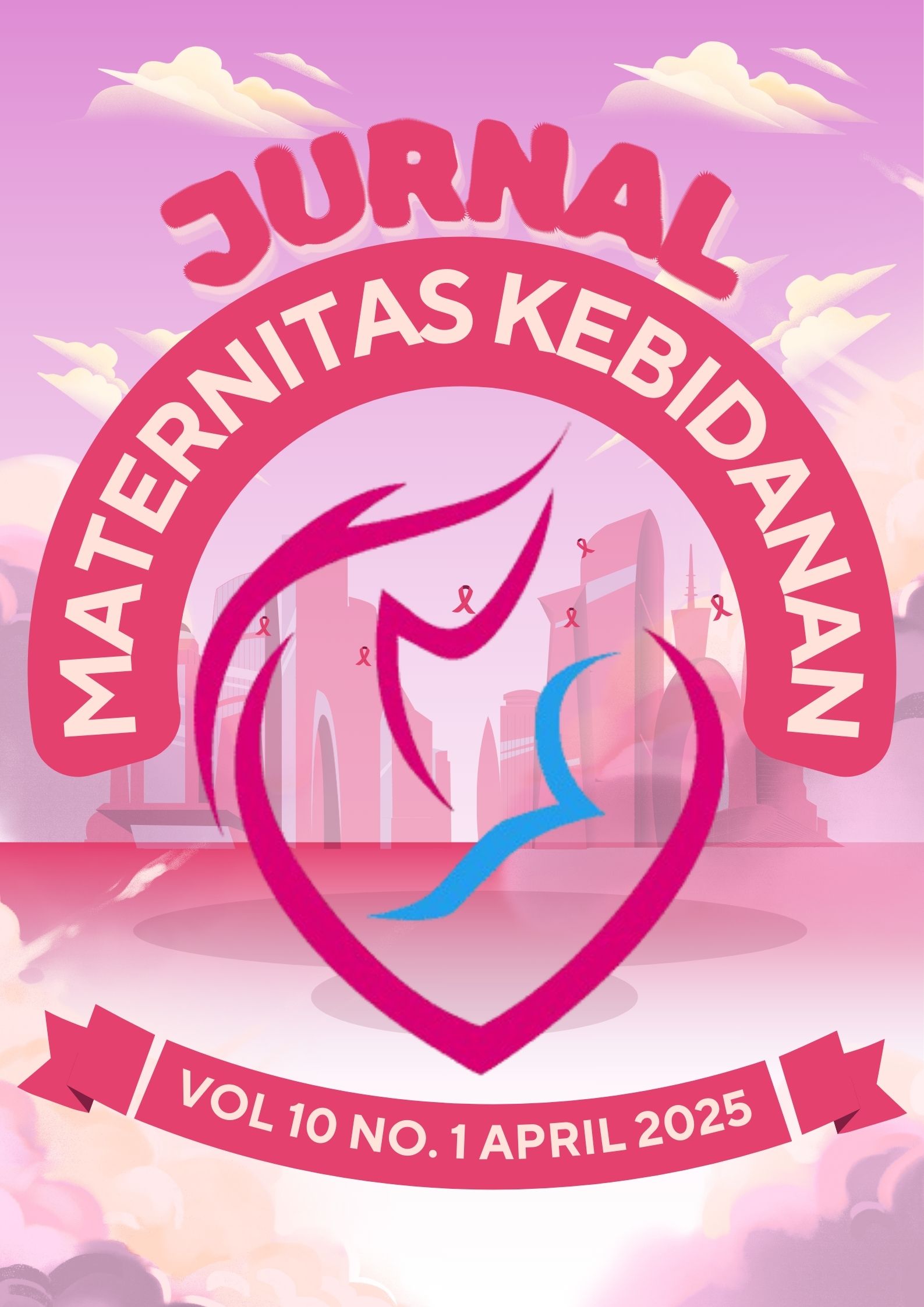Analysis Of Factors Associated With The Incidence Of Breast Milk Dams In Post-Partum Mothers
##plugins.themes.academic_pro.article.main##
Abstract
Breast milk Dam is caused by the discharge of milk that is not smooth, because the baby is not breastfeeding often enough, increased production, late breastfeeding, the relationship with the baby (bonding) is not good, and can also be due to restrictions on breastfeeding time. To determine the frequency distribution of knowledge, frequency of breastfeeding, frequency of breastfeeding position, frequency of the state of the nipple with the incidence of breast milk dams in post partum mothers DI Tiara Medistra Clinic. This type of research using analytical survey research methods with cross sectional approach. The population in this study was all post partum mothers at the Tiara Medistra Clinic in July 2024 as many as 49 people. The sampling technique in this study is total sampling. Analysis in the study is univariate and bivariate analysis. Bend of breast milk occurred in 36.7% of respondents withinverted nipple shape, 30.6% of respondents with less knowledge, 40.8% of respondents with less frequency of breastfeeding and occurred in 26.5% of respondents with wrong breastfeeding position. There is a meaningful relationship between knowledge, frequency of breastfeeding, breastfeeding position and nipple shape with breast milk dams. It is expected that the research site, Tiara Medistra Clinic, will continue to improve the quality of health services and conduct health promotion.
##plugins.themes.academic_pro.article.details##

This work is licensed under a Creative Commons Attribution-ShareAlike 4.0 International License.
References
- A. Sulistyawati. The Book Of Proverbs Is Dedicated To The Mother Of Nephi. Yogyakarta: Andi Offset; 2009.
- Ministry of Health RI. Riskesdas Basic Health Research. Jakarta; 2013.
- Ministry of Health RI. Normal Childbirth Care. JNPK-KR. Jakarta; 2008.
- S. Prawirohardjo. Obstetric Science. London: Bina Pustaka; 2008.
- S. Saleh. Obstetric care in the puerperium. Jakarta: Salemba Medika; 2009.
- A. Amelia. Factors that affect the incidence of breast milk dams in Post partum mothers in RSIA Siti Fatimah Makassar. http://repositori.uin-alauddin.ac.id. 2010;
- Elvinaro Ardianto. Research methodology for quantitative and qualitative Public Relations. Jakarta: Simbiosa Rekatama Media: Hoboken NJ; 2010.
- M. Sopiyudin Dahlan. Sample size and sampling methods in medical and Health Research. Jakarta: Salemba Medika; 2010.
- Muhammad Iman. Guidelines For The Preparation Of Scientific Papers In The Field Of
- Muhammad Iman. Utilization of SPSS in public health research. Bandung: Cita Pustaka Media Perintis; 2014.
- Heriana Cecep. Health data processing management: teaching materials for health data management courses. London: Refika Aditama; 2015.
- This Is The Ira. Textbook: fundamentals of Nursing Research and Statistical Data Processing. London: Trans Info Media; 2017.
- Soekidjo Notomoadjo. Health promotion and Health Behavior. Jakarta: Rineka Cipta; 2012.
- Manuaba IACMIBGIB. Textbook Of Obstetric Pathology For Obstetric Students. London: EGC; 2009.
- S Budiasih. Handbook Of Nursing Mothers. Jakarta: Karya Kita; 2008.
- Icesmi Sukarni. Pathology of Pregnancy, Childbirth, puerperium and neonates high risk. Jakarta: Nuha Medika; 2015.

